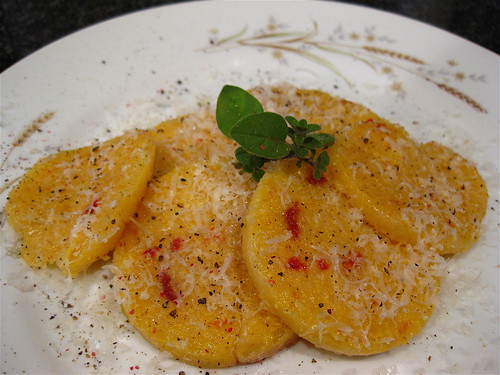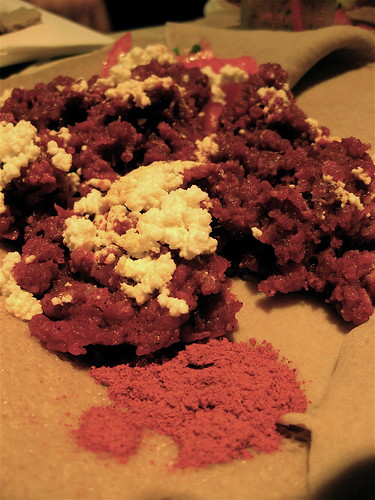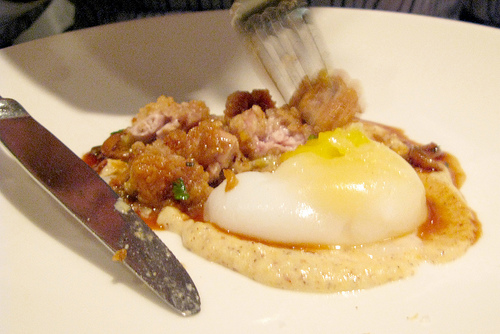It’s time for another item from the DC Omnivore 100 list of the top one hundred foods every good omnivore should try at least once in their lives.
There’s something so comforting about polenta. Maybe it’s the mushiness. Last night, fighting off a fever, I had an intense craving for this cornmeal goo, so I dragged myself off to the store to rustle up a plate.
Polenta is one of the staple dishes of Northern Italy, though it also can be found throughout Eastern Europe and Turkey. Honestly, there’s not much to it – boiled cornmeal using either the yellow or white varieties, fine or coarse grained. But it’s a bit labor-intensive. Like risotto, it requires constant stirring as the cornmeal grain’s starch slowly gelatinizes. But once it does – oh happy day. You get a soft, creamy mixture, and that’s before adding any other delicious ingredients like butter or cheese! It’s also extremely economical, filling peasant food that can be prepared in so many ways, from breakfast to dinner.
If you see polenta on Italian restaurant menus around DC, chances are it’ll be paired with sausage – this is a pretty traditional mix of mild and spicy. Tosca takes it to another level, matching it with sea urchin ragu and caviar (for lunch!). But polenta doesn’t have to be served straight from the pot – you can also cool it and fry it up. Fried polenta has a more complex flavor than when just boiled – the taste of corn is more pronounced. I was inspired by the grilled polenta I recently tried at Vegetate to make an attempt at this style myself. Continue reading


